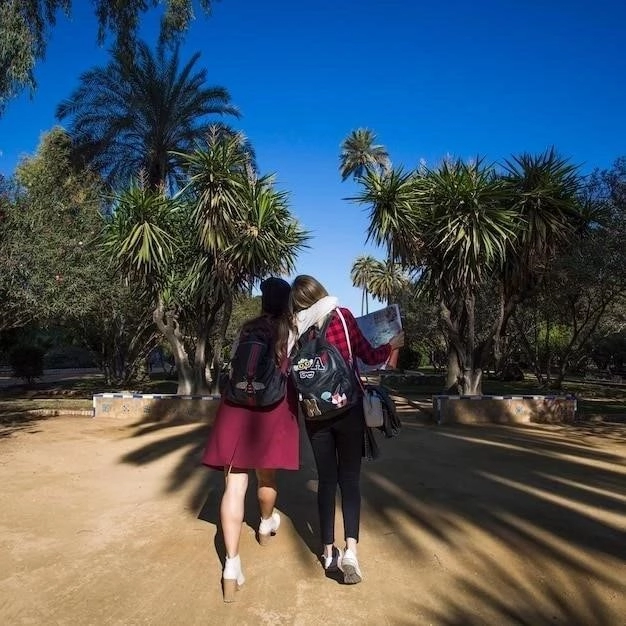Trinidad and Tobago, two vibrant islands in the Caribbean Sea, offer a captivating blend of culture, nature, and history. Explore lush rainforests, relax on pristine beaches, experience the excitement of Carnival, and immerse yourself in the islands’ rich heritage.
Planning Your Trip
Embarking on a journey to the captivating islands of Trinidad and Tobago requires meticulous planning to ensure a seamless and enriching experience. Here’s a comprehensive guide to help you prepare:
Best Time to Visit
Trinidad and Tobago boast a tropical climate with warm temperatures year-round. The ideal time to visit is during the dry season, which typically spans from January to May. During these months, you can expect sunshine, low humidity, and minimal rainfall, perfect for exploring the islands’ outdoor attractions. The wet season, from June to December, brings occasional showers and increased humidity but also offers lower accommodation prices and fewer crowds.
Flights and Accommodation
Numerous international airlines offer flights to Piarco International Airport (POS) in Trinidad, the main gateway to the islands. Consider booking flights in advance, especially during peak season. Accommodation options cater to various budgets, from luxury resorts to cozy guesthouses. It’s advisable to reserve accommodations well in advance, particularly if traveling during Carnival or other popular events.
Packing Essentials
Pack light, breathable clothing suitable for a tropical climate. Don’t forget essentials like swimwear, sunscreen, insect repellent, a hat, and sunglasses. If you plan on hiking, pack comfortable walking shoes. It’s also wise to pack a light rain jacket or umbrella, as brief showers can occur unexpectedly.
Itinerary Suggestions
Tailor your itinerary to your interests and the duration of your stay. For nature enthusiasts, a visit to Tobago’s lush rainforests and pristine beaches is a must. Culture lovers should immerse themselves in the vibrant Carnival celebrations and explore historical sites. Consider allocating sufficient time to both islands to fully appreciate their unique offerings.
Visas and Entry Requirements
Ensuring a smooth arrival in Trinidad and Tobago requires adherence to the country’s visa and entry regulations. Here’s a comprehensive guide for travelers:
Visa Requirements

Citizens of many countries are eligible for visa-free entry into Trinidad and Tobago for varying durations. However, it’s crucial to verify the specific visa requirements based on your nationality well in advance of your trip. You can find the most up-to-date information on the official website of the Ministry of National Security of Trinidad and Tobago or consult with the nearest embassy or consulate.
Passport Validity
Your passport must be valid for at least six months beyond your intended stay in Trinidad and Tobago. Ensure that you have sufficient blank pages in your passport for entry and exit stamps.
Return or Onward Ticket
Upon arrival, you may be required to present a return or onward ticket as proof of your intention to depart Trinidad and Tobago within the permitted timeframe.
Proof of Sufficient Funds
Immigration officials may request evidence of sufficient financial resources to cover your expenses during your stay. This can include cash, credit cards, or bank statements.
Customs Regulations
Familiarize yourself with Trinidad and Tobago’s customs regulations regarding the import and export of goods. Certain items, such as firearms, drugs, and agricultural products, are strictly prohibited or require special permits.
Getting to Trinidad and Tobago
Trinidad and Tobago, nestled in the southern Caribbean Sea, are readily accessible via international air travel. Here’s a guide to navigate your journey to these captivating islands:
By Air
Piarco International Airport (POS), located in Trinidad, serves as the primary gateway for international travelers. Numerous major airlines operate flights to and from Piarco, connecting Trinidad and Tobago to major cities worldwide. Direct flights are available from North America, Europe, and South America, making travel convenient for visitors from various regions.
Inter-Island Travel
While Trinidad serves as the primary arrival point, traveling between the islands is seamless. Caribbean Airlines, the national carrier, offers frequent flights between Piarco International Airport (POS) in Trinidad and A.N.R. Robinson International Airport (TAB) in Tobago. The flight duration is approximately 20 minutes, providing breathtaking aerial views of the islands.
Ferry Services
An alternative inter-island transportation option is the ferry service operating between Trinidad and Tobago. The ferry terminal in Trinidad is located in Port of Spain, while the Tobago terminal is in Scarborough. The ferry journey takes around 2.5 to 4 hours, offering scenic views of the Caribbean Sea. However, it’s advisable to check ferry schedules in advance, as they can be subject to change.
Getting Around Trinidad and Tobago
Navigating the islands of Trinidad and Tobago is relatively straightforward, with various transportation options available to suit different preferences and budgets. Here’s a comprehensive guide to help you traverse these captivating islands:
Taxis
Taxis are a ubiquitous mode of transportation in Trinidad and Tobago, particularly in urban areas. Look for taxis with a distinctive black-and-white checkered pattern on the side. It’s advisable to confirm the fare with the driver before commencing your journey, as taxis are not typically metered.
Rental Cars
Renting a car provides flexibility and convenience for exploring the islands at your own pace. Several international and local car rental companies operate in Trinidad and Tobago. However, keep in mind that driving is on the left-hand side of the road. A valid international driver’s permit is required.
Public Buses
Public buses, operated by the Public Transport Service Corporation (PTSC), offer an affordable way to travel between cities and towns in Trinidad. However, bus schedules can be infrequent and routes may be limited. Private minibus services, known as “maxis,” are also available, providing faster but less comfortable transportation.
Ferries (Inter-Island)
For travel between Trinidad and Tobago, ferries provide a scenic and economical alternative to air travel. The ferry service operates between Port of Spain in Trinidad and Scarborough in Tobago. Be sure to check schedules in advance, as crossings can be affected by weather conditions.
Accommodation
Trinidad and Tobago offer a diverse range of accommodation options to suit every taste and budget, from luxurious resorts to charming guesthouses. Whether you seek a beachfront retreat, a tranquil eco-lodge, or a vibrant city stay, you’ll find a comfortable haven to enhance your Caribbean experience.
Luxury Resorts
For those seeking the epitome of indulgence, Trinidad and Tobago boast an array of upscale resorts. These establishments offer world-class amenities, including private beaches, infinity pools, gourmet restaurants, and rejuvenating spas. Many are situated along the islands’ pristine coastlines, providing breathtaking ocean views and direct access to aquatic adventures.
Boutique Hotels
Boutique hotels in Trinidad and Tobago provide a more intimate and personalized experience. These smaller establishments often feature unique architectural designs, stylish decor, and attentive service. They are ideal for travelers seeking a cozy and sophisticated atmosphere, often located in convenient urban settings or tucked away in tranquil corners of the islands.
Guesthouses and Villas
For a more authentic and immersive experience, consider staying in guesthouses or villas. Guesthouses offer a homey ambiance and the opportunity to interact with local hosts, providing insights into the islands’ culture and lifestyle. Villas provide privacy and independence, often featuring fully equipped kitchens, spacious living areas, and private pools.
Money and Currency
Understanding the currency and financial practices of Trinidad and Tobago is essential for a smooth and enjoyable travel experience. Here’s a comprehensive guide to navigating monetary matters in these vibrant Caribbean islands:
Currency
The official currency of Trinidad and Tobago is the Trinidad and Tobago dollar (TTD), often symbolized as TT$. It is divided into 100 cents. US dollars are widely accepted, but it’s generally advantageous to exchange currency for local dollars to obtain the best exchange rates and avoid potential transaction fees.
Currency Exchange
Currency exchange services are readily available at banks, airports, and authorized exchange bureaus throughout Trinidad and Tobago. Banks typically offer the most favorable exchange rates but may have limited operating hours. It’s advisable to compare rates from multiple providers before exchanging currency.
Credit Cards and ATMs
Major credit cards, such as Visa and Mastercard, are widely accepted in larger establishments, including hotels, restaurants, and supermarkets. However, smaller businesses and local vendors may prefer cash transactions. ATMs are prevalent throughout the islands, providing convenient access to local currency. It’s recommended to notify your bank of your travel plans to avoid any potential issues with card usage.
Tipping
Tipping is customary in Trinidad and Tobago for services rendered in the tourism industry. A standard tip of 10-15% of the bill is appropriate for restaurants, taxis, and hotel staff. Always check if a service charge has already been added to your bill before adding a tip.
Health and Safety

Prioritizing your well-being while traveling to Trinidad and Tobago ensures a safe and enjoyable experience. Here’s a comprehensive guide to health and safety considerations:
Vaccinations and Health Precautions
Consult with your healthcare provider regarding recommended vaccinations and health precautions for travel to Trinidad and Tobago. Routine vaccinations, such as hepatitis A and typhoid, are generally advised. Depending on your itinerary and activities, additional vaccinations, such as yellow fever, may be required. Pack a well-stocked first-aid kit containing essential medications, insect repellent, and sunscreen.
Food and Water Safety
It’s generally safe to consume food and water in established restaurants and hotels in Trinidad and Tobago. However, exercise caution when consuming food from street vendors or in less developed areas. Stick to bottled or purified water for drinking and avoid ice in beverages unless it’s made from safe water sources.
Personal Safety
Trinidad and Tobago are generally safe destinations for travelers, but it’s essential to exercise caution and common sense, as in any unfamiliar environment. Avoid displaying excessive amounts of cash or expensive jewelry. Be mindful of your surroundings, especially at night, and avoid walking alone in poorly lit or deserted areas. Use reputable taxi services and be aware of your belongings in crowded places.
Emergency Contacts
Save important emergency contact numbers in your phone, including the local police (999), fire department (990), and ambulance services (811). It’s also advisable to have the contact information for your country’s embassy or consulate in Trinidad and Tobago readily available in case of any emergencies or consular assistance.
Culture and Etiquette
Trinidad and Tobago boast a vibrant and diverse culture shaped by a rich blend of African, Indian, European, and Indigenous influences. Understanding local customs and etiquette is key to fostering respectful interactions and embracing the islands’ unique heritage.
Greetings and Courtesy

Trinbagonians, as the locals are known, are generally warm and welcoming. A handshake with a smile is the customary greeting. When addressing someone for the first time, use formal titles, such as Mr., Mrs., or Miss, followed by their last name. It’s considered polite to wait for an invitation before using someone’s first name.
Island Time
Embrace the relaxed pace of “island time.” Punctuality is appreciated but not always strictly adhered to. Be patient and flexible with schedules, as things may move at a slower pace than you’re accustomed to. Embrace the opportunity to slow down and savor the moment.
Festivals and Celebrations
Trinidad and Tobago are renowned for their vibrant festivals, particularly Carnival, which is celebrated with great enthusiasm and abandon. If you have the opportunity to attend a local festival, embrace the festive spirit, join in the celebrations, and show respect for local traditions. It’s also a great way to experience the islands’ musical heritage, from calypso to soca.
Dress Code
While casual attire is generally acceptable, it’s considered respectful to dress modestly, especially when visiting religious sites or attending formal events. Avoid revealing clothing and opt for more conservative attire when appropriate. When in doubt, it’s always a good idea to err on the side of modesty.
Food and Drink
Trinidad and Tobago’s culinary scene is a delectable fusion of flavors, reflecting the islands’ rich cultural tapestry. From fiery curries to savory seafood, prepare your taste buds for a tantalizing gastronomic adventure.
National Dishes
No culinary journey through Trinidad and Tobago is complete without savoring the national dish, “crab and dumplings.” This flavorful dish features succulent crab meat simmered in a rich and aromatic gravy, served with tender dumplings. Another must-try is “roti,” an Indian-influenced flatbread, often filled with curried chickpeas, potatoes, or meat.
Street Food Delights
For a taste of local life, explore the vibrant street food scene. “Doubles,” a popular breakfast staple, consists of two fried flatbreads called “bara” filled with curried chickpeas and topped with chutneys. “Bake and shark,” a beloved beachside treat, features fried flatbread filled with seasoned shark meat and your choice of toppings.
Seafood Sensations
Being island nations, Trinidad and Tobago boast an abundance of fresh seafood. Indulge in grilled kingfish, mahi-mahi, or red snapper, often seasoned with local herbs and spices. For a unique delicacy, try “cascadoo,” a freshwater fish often served in a savory stew.
Tropical Fruits and Beverages
Quench your thirst with refreshing beverages made from an array of tropical fruits. Sip on freshly squeezed sugarcane juice, known as “cane juice,” or try “seawall,” a vibrant green drink made with seaweed and spices. For a taste of local rum, sample a “rum punch,” a potent blend of rum, fruit juices, and spices.
Things to Do in Trinidad
Trinidad, the larger of the two islands, pulsates with a vibrant energy, offering a captivating blend of cultural immersion, natural wonders, and urban adventures. Here’s a glimpse of the island’s diverse offerings:
Immerse Yourself in Culture
Begin your Trinidadian journey in Port of Spain, the island’s capital city. Visit the magnificent Magnificent Seven, a collection of architectural gems from the late 19th and early 20th centuries. Explore the National Museum and Art Gallery to delve into Trinidad’s rich history and artistic heritage. Don’t miss the chance to witness a lively steelpan performance, a true embodiment of Trinidadian culture.

Discover Natural Wonders
Escape the urban hustle and bustle with a visit to the Asa Wright Center, a world-renowned bird sanctuary nestled in the lush Northern Range. Hike through the rainforest to spot colorful birds, including the iconic scarlet ibis. For a unique experience, embark on a boat tour of the Caroni Swamp, home to a mesmerizing colony of bioluminescent creatures.
Embrace the Carnival Spirit
No trip to Trinidad is complete without experiencing the infectious energy of Carnival, held annually in the weeks leading up to Lent. Join the vibrant street parades, marvel at the elaborate costumes and masquerades, and dance to the infectious rhythms of soca and calypso music. It’s an unforgettable celebration of Trinidadian culture.
Indulge in Culinary Delights
Trinidad’s diverse culinary scene is a treat for the senses. Sample street food delicacies like “doubles” and “bake and shark,” or savor a flavorful plate of “crab and dumplings.” For a taste of Indian-influenced cuisine, try “roti,” a savory flatbread filled with curried meats, vegetables, or chickpeas.
Things to Do in Tobago
Tobago, Trinidad’s smaller sister island, beckons with its unspoiled beauty, tranquil ambiance, and a slower pace of life. Escape to this idyllic island paradise and discover a world of natural wonders and laid-back charm.
Unwind on Pristine Beaches
Tobago is renowned for its picturesque beaches, lapped by turquoise waters and fringed by swaying palm trees. Pigeon Point, with its iconic thatched-roof jetty, is a must-visit. For a more secluded experience, head to Englishman’s Bay or Castara Bay, where you can relax on the sand, swim in crystal-clear waters, or snorkel among vibrant coral reefs.
Explore Lush Rainforests
Embark on an unforgettable adventure through the Tobago Main Ridge Forest Reserve, the oldest protected rainforest in the Western Hemisphere. Hike through verdant trails, marvel at cascading waterfalls, and spot exotic birds, including the rare white-tailed sabrewing hummingbird.
Discover Underwater Wonders
Dive into Tobago’s underwater realm, teeming with marine life. Explore the Buccoo Reef, a protected marine park home to colorful coral formations, schools of tropical fish, and even graceful sea turtles. For a thrilling encounter, swim with gentle manta rays at Speyside, a world-renowned diving and snorkeling destination.
Embrace Local Culture
Immerse yourself in Tobago’s rich culture and history. Visit the Fort King George Heritage Park, a restored 18th-century fort offering panoramic views of Scarborough, the island’s capital. Explore the Tobago Museum to learn about the island’s fascinating past, from its indigenous inhabitants to its colonial era.
Festivals and Events
Trinidad and Tobago pulsate with a vibrant energy year-round, fueled by a calendar brimming with colorful festivals and cultural celebrations. Immerse yourself in the islands’ infectious spirit and witness the captivating traditions that define these Caribbean gems.
Carnival – A Celebration of Life
Trinidad and Tobago’s Carnival, an explosion of music, dance, and revelry, is the undisputed highlight of the islands’ festive calendar. Held annually on the Monday and Tuesday before Ash Wednesday, Carnival transforms the streets into a kaleidoscope of elaborate costumes, pulsating rhythms, and infectious energy. Join the joyous crowds, dance to the irresistible beat of soca and calypso music, and embrace the spirit of freedom and abandon.
Divali – A Festival of Lights
Experience the magic of Divali, the Hindu festival of lights, celebrated with great fervor in Trinidad and Tobago, particularly within the Indo-Trinidadian community. Homes and streets come alive with thousands of flickering diyas (clay lamps), illuminating the night. Witness vibrant processions, traditional dances, and the sharing of sweet treats as the triumph of good over evil is celebrated.

Easter – A Time for Reflection and Rejoicing
Easter in Trinidad and Tobago is a blend of religious observance and festive traditions. Attend church services, witness colorful processions, and indulge in traditional Easter treats, such as hot cross buns and freshly baked bread. For a unique spectacle, head to Tobago for the Goat and Crab Races, a quirky and entertaining event held on Easter Tuesday.
Trinidad Carnival
Trinidad Carnival, renowned as “The Greatest Show on Earth,” is an explosion of color, music, and revelry that transforms the island into a pulsating spectacle of freedom and abandon. Immerse yourself in this unforgettable celebration of Trinidadian culture and creativity.
A Fusion of History and Heritage
Trinidad Carnival’s roots run deep, tracing back to the 18th century when French plantation owners introduced masked balls and celebrations. Over time, these festivities evolved, incorporating elements of African and Indigenous traditions, culminating in the vibrant cultural phenomenon celebrated today. Carnival embodies the island’s history, resilience, and indomitable spirit.
Masquerade and Music
The heart of Trinidad Carnival lies in its elaborate masquerades. “Masqueraders,” adorned in vibrant, often outlandish costumes, take to the streets in a dazzling display of creativity and artistry. From traditional characters like the “Jab Molassie” and “Midnight Robber” to contemporary designs pushing creative boundaries, Carnival costumes are a feast for the eyes. The air thrums with the infectious rhythms of soca, calypso, and steelpan music, fueling the energy and excitement.
Join the Jouvert
Experience the unique tradition of J’ouvert (pronounced “Jou-vay”), a pre-dawn street party that kicks off the official two days of Carnival. Embrace the spirit of liberation and revelry, dancing through the streets covered in mud, paint, or chocolate, a symbolic release from societal constraints.
Tobago Carnival
While Trinidad’s Carnival explodes in a frenzy of color and revelry, Tobago offers a more intimate and laid-back Carnival experience, deeply rooted in tradition and imbued with the island’s characteristic warmth and charm. Discover a unique celebration of heritage and creativity.
A Distinct Cultural Flavor
Tobago’s Carnival, though smaller in scale, retains a distinct cultural flavor, emphasizing traditional mas characters and folklore. Witness the vibrant costumes and energetic performances of “Moko Jumbies” (stilt walkers), “Speech Bands” delivering satirical social commentary, and the pulsating rhythms of the “tamboo bamboo” bands, using instruments crafted from bamboo. The atmosphere is joyous and welcoming, inviting visitors to join in the celebration.
Highlights of Tobago’s Carnival
One of the highlights of Tobago’s Carnival is the “J’ouvert” celebration, which takes place in the early hours of Monday morning. Revelers take to the streets covered in mud, paint, and even chocolate, dancing to the rhythm of traditional drums and steelpan bands. Another unique aspect is the “Carnaval Village” in Scarborough, where you can experience cultural performances, sample local cuisine, and purchase unique crafts. The “Night Mas” on Carnival Tuesday is a visual spectacle, with illuminated costumes and vibrant performances.
Beaches
Trinidad and Tobago, blessed with idyllic coastlines lapped by the turquoise waters of the Caribbean Sea, offer a beach lover’s paradise. From secluded coves to lively stretches of sand, discover your perfect slice of paradise.
Trinidad’s Tranquil Shores
While Trinidad is known for its vibrant culture and bustling energy, the island also boasts a collection of tranquil beaches, perfect for escaping the urban hustle and bustle. Maracas Bay, famed for its breathtaking scenery and “bake and shark” vendors, is a must-visit. For a more secluded experience, venture to Las Cuevas Bay, with its sheltered cove and calm waters, or Blanchisseuse Beach, a nesting ground for endangered leatherback turtles.
Tobago’s Unspoiled Beauty

Tobago truly shines when it comes to pristine beaches. Pigeon Point, with its iconic thatched-roof jetty, is a postcard-perfect spot for swimming, sunbathing, and enjoying water sports. Englishman’s Bay, often cited as one of the Caribbean’s most beautiful beaches, captivates with its secluded charm, calm waters, and lush greenery. For a taste of local life, head to Store Bay, a lively beach with food stalls, craft vendors, and glass-bottom boat tours to the nearby Buccoo Reef.
Beyond Swimming and Sunbathing
Trinidad and Tobago’s beaches offer more than just swimming and sunbathing. Embark on a thrilling jet ski adventure, try your hand at stand-up paddleboarding, or explore the underwater world with a snorkeling or diving excursion. For a truly memorable experience, witness the nesting of endangered leatherback turtles at Grande Riviere Beach in Trinidad during nesting season (March to August).
Nature and Wildlife

Beyond their stunning beaches, Trinidad and Tobago harbor a remarkable biodiversity, boasting lush rainforests, vibrant coral reefs, and a fascinating array of wildlife. Embark on an unforgettable journey of discovery through these ecological treasures.
Trinidad’s Natural Wonders
Explore the lush Northern Range, a mountainous region home to the Asa Wright Nature Centre, a world-renowned bird sanctuary. Hike through verdant trails, spot colorful hummingbirds, toucans, and the elusive oilbird, a nocturnal species found in caves. For a unique experience, visit the Caroni Swamp, a mangrove wetland and vital habitat for a diverse ecosystem, including the scarlet ibis, caimans, and an array of other birdlife.
Tobago’s Unspoiled Beauty
Tobago’s crown jewel is the Tobago Main Ridge Forest Reserve, the oldest protected rainforest in the Western Hemisphere. Hike through this pristine rainforest, marvel at cascading waterfalls, and encounter a fascinating array of flora and fauna, including the endemic Tobago greenlet and the agouti, a small rodent.
Underwater Exploration
Dive into the underwater realm surrounding both islands, home to vibrant coral reefs teeming with marine life. Explore the Buccoo Reef, a protected marine park in Tobago, or snorkel among colorful fish and graceful sea turtles at Speyside. For a truly unforgettable experience, witness the nesting of endangered leatherback turtles on beaches like Grande Riviere in Trinidad during nesting season.
History and Heritage
Trinidad and Tobago’s history is a captivating tapestry woven from indigenous cultures, colonial influences, and the struggle for independence. Delve into the islands’ past and discover the events and legacies that have shaped these Caribbean nations.
Pre-Colonial Roots
Long before the arrival of Europeans, Trinidad and Tobago were inhabited by indigenous peoples, including the Arawak and Carib tribes. Evidence of their presence can still be found in archaeological sites and artifacts, offering glimpses into their rich cultural heritage. The Tobago Museum and the National Museum and Art Gallery in Trinidad provide insights into this fascinating pre-colonial past.
Colonial Influences
Trinidad and Tobago’s colonial history is marked by a succession of European powers, including Spain, Britain, France, and the Netherlands. Explore remnants of this colonial legacy in the architecture, language, and cultural traditions. Visit Fort King George in Tobago, a restored 18th-century fort, or admire the Magnificent Seven buildings in Port of Spain, showcasing a blend of architectural styles.
Independence and Beyond
Trinidad and Tobago gained independence from British rule in 1962, marking a pivotal moment in their history. Today, the islands celebrate their heritage while forging a modern identity. Explore museums and historical sites, engage with locals, and witness the vibrancy of their cultural expressions to gain a deeper understanding of Trinidad and Tobago’s journey as independent nations.










